


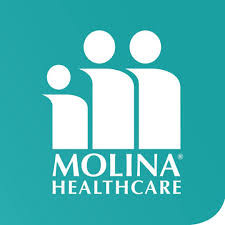
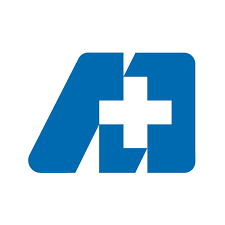










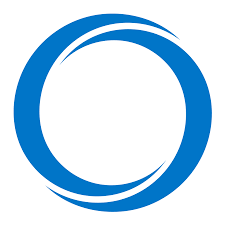


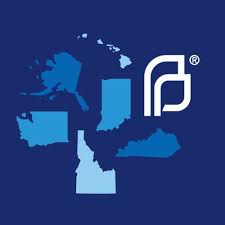

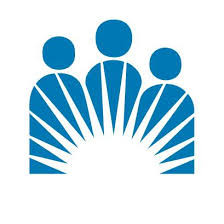









Nursing Jobs: Seattle, Washington, Overview
Known as the Emerald City for its lush green landscape, Seattle, Washington, is not the capital of the Evergreen State (that’s Olympia), but is its largest city. It may be known as the home of the first Starbucks, but Seattle brings more to nursing professionals than a famous waterfront, a thriving tech scene, and lots of coffee. If you are considering searching for nursing jobs, Seattle, Washington, has a variety of positions available, whether you're in the market for full-time, part-time, contract, temporary, or per diem positions. Start by learning more about what this city offers before and after a shift.
Fast Facts About Nursing Jobs in Seattle
- Is Washington a compact state? Yes. It is the only West Coast state to join the NLC.
- How much do nurses make in Seattle? This is a breakdown of average annual salaries in Seattle by license/certification:
- NP salary in Seattle: $150,170
- RN salary in Seattle: $115,170
- LPN salary in Seattle: $78,460
- CNA salary in Seattle: $48,320
- Where can I learn more about nurse license requirements in Washington? You can visit the You can find the latest information about licensing on the Washington State Board of Nursing website. If your license is nearing its expiration date, learn how to renew Washington nursing licenses.
What to Know About Nursing Jobs in Seattle
Seattle has a population of 755,000. Residents in this large metro area — which includes cities like Bellevue, Redmond, Kirkland, and Tacoma —demand a great deal of healthcare, opening up opportunities for nursing jobs. Seattle is hiring for a variety of roles, including the following:
- CRNA jobs in Seattle, WA
- CNM jobs in Seattle, WA
- Nurse practitioner jobs in Seattle, WA
- Registered nurse jobs in Seattle, WA
- Licensed practical nurse jobs in Seattle, WA
- Certified nursing assistant jobs in Seattle, WA
- Surgical tech jobs in Seattle, WA
- CMA jobs in Seattle, WA
- Medication aide jobs in Seattle, WA
- Home health aide jobs in Seattle, WA
- Caregiver jobs in Seattle, WA
Whom might you be caring for in nursing jobs in Seattle? The median age of residents is just over 35, with 13% of the population age 65 or older. When applying to positions, be sure to highlight your cultural competence — a skill that's key for these nursing jobs. Seattle, Washington, has a diverse population: Nearly 62% of residents are White; 17% are Asian; 10.5% are two or more races; 8% are Hispanic or Latino; and7% are Black.
There is a wide variety of languages spoken in Seattle, including Spanish, Hindi, Chinese, Japanese, Korean, and Tagalog. Thanks to this strong multicultural community, you may want to call out any multilingual skills on your nursing resume.
Working in Seattle
Seattle is the home of big names like Blue Origin and Microsoft, but engineering isn’t the only game in town. Fueling interesting options for nurses, some of the key industries in Seattle are health services and life sciences, along with the green economy.
If acute care work is at the top of your list of nursing jobs, Seattle, Washington, is home to some nationally known names. Check out the latest openings at hospitals, clinics, and other medical centers in the Seattle metro area, such as:
- CommonSpirit Health (CHI Franciscan and Virginia Mason)
- EvergreenHealth
- Fred Hutchinson Cancer Center
- MultiCare Health System
- Overlake Medical Center & Clinics
- Planned Parenthood Great Northwest
- Providence Health
- Skagit Regional Health
- Swedish Health Services
- UW Medicine
- Virginia Mason Franciscan Health-St. Joseph Medical Center
If caring for long-term patients is where you’d like to focus your career, there are plenty of post-acute care options for nursing jobs. Seattle has many nursing homes in the city alone.
Like other populous West Coast cities, there’s a lot of fun to be had in Seattle, but commuting is not usually part of that fun. The average commute in Jet City — a nickname courtesy of all the aerospace engineers driving to work with you — is 27.5 minutes. Unlike many other cities, only about 49% of commuters drive alone in their cars and a whopping 21% take mass transit. It might be nice to get to know your fellow Seattleites on the streetcar, the light rail, or the monorail on your way to your new nursing job.
If you need childcare while you are on shift, Seattle has many options. The Washington State Department of Children Youth and Families website can help you find and assess childcare providers and can provide resources for those who need assistance paying for care.
And if you need care coverage for your furry family members, Seattle has plenty, which is a good thing, considering there are more cats and dogs in Seattle than children.
Living in Seattle
Seattle has that special combination of a lively urban environment and great natural beauty. The area around Seattle contains mountains, lakes, beaches, and rainforests. You know it’s a beautiful day to head to Olympic National Park on the ferry if, as Seattleites like to say, “the mountains are out” — meaning Mt. Rainier is visible from the city. Other options for outdoor excursions on a day off might include hiking Mount Si, or hitting the almost 12 miles of trails at Discovery Park. Seattle residents are often avid bikers, kayakers, skiers, and snowboarders.
If your idea of exercise is more of a city stroll, choose Pike Place Market, one of Seattle’s most famous landmarks, attracting tourists and locals alike. This city icon was founded in 1907, and as the center of the Pike Place Market Historic District, provides shoppers with more than 220 independently owned shops and restaurants, more than 160 craftspeople, 70-plus farmers, and over 60 permitted buskers.
Beyond the Market, the food scene in Seattle is nationally known for its focus on local, sustainable foodstuffs and of course, fresh seafood. Local favorites include everything from French bistros to Korean fusion to right-from-the-sea oysters.
But Seattle isn’t just for food and exercise, there’s an arts and culture scene as well. You can hear the Seattle Symphony at Benaroya Hall or see the Seattle Opera and Pacific Northwest Ballet. But Seattle was also the epicenter of grunge music and once home to superstar bands like Nirvana, Pearl Jam, and Soundgarden. Now there is a diverse musical element to the city, so you can enjoy live music festivals like Bumbershoot (which includes comedy, dance, and theater), or the Capitol Hill Block Party in July, which celebrates activism along with punk, pop, and R&B.
The chance to see and enjoy art doesn’t end with music in the Emerald City. Seattle is home to four major art museums — the Frye and Seattle Art Museums, the Henry Art Gallery, and the Seattle Asian Art Museum — as well as many smaller institutions. Or just head to one of Seattle’s Arts and Cultural Districts to soak in visual arts, ethnic festivals, and even more concerts.
One other famous characteristic of Seattle is its weather, or more specifically, the rainfall. The city doesn’t see more inches per year than cities like Miami, New Orleans, or Houston (39.9 inches), yet it does have more rainy days (an average of 156 per year) thanks to small amounts of precipitation. The upside? Lush green vegetation and a beautiful dry season between June and September averaging less than an inch of rain.
With all Seattle has to offer, it’s no surprise that the cost of living is significantly higher than in most of the country — around 46%% higher. Housing, groceries, and gasoline all cost more.
IntelyCare Is Your Source for Great Nursing Jobs
Seattle, Washington, has excellent career opportunities for nurses and healthcare professionals. Need some help getting started? Find out how IntelyCare can match you with nursing jobs in your specialty area and preferred facility type.